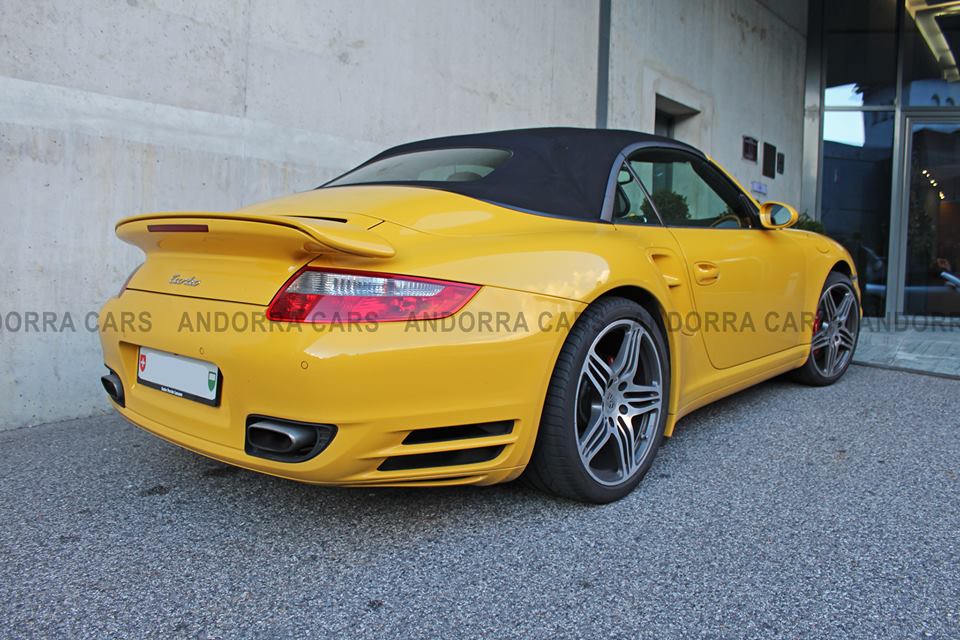Turbo/Turbo Cabriolet (2010–2013)
The refreshed version of the 997 Turbo was unveiled at the 2009 Frankfurt Motor Show. It received a completely new 6-cylinder, 3.8 litre boxer engine generating a maximum power output of 500 PS (368 kW; 493 bhp) and 651 N⋅m (480 lb⋅ft) of torque (700 N⋅m (516 lb⋅ft) with overboost) using revised BorgWarner variable turbine geometry (VTG) turbochargers.
The new engine shared the construction of other 997 Gen II DFI engines. The 997 Gen I engine’s Nikasil cylinder liners were replaced with an Alusil block that combined the cylinders and crankcase into an integrated casting for each bank, thus reducing weight (in contrast to a separate cylinder block and crankcase for each bank).
The dry sump lubrication system in the Turbo is different from other 911 models in that it uses integrated oil reservoirs at the bottom of the engine, separate from the crank case and utilises six oil pumps. The engine is configured with direct fuel injection and a compression ratio of 9.8:1.
The intake manifold is a slightly larger unit, adopted from the outgoing GT2 along with slightly larger intake valves, wheels for the Turbochargers, and intercoolers. The exhaust system is also more refined and aids in the power increase while improving fuel economy. The overall result is an engine that is 10 kg (22 lb) lighter than the previous engine and has a peak turbo-boost of 11.6 psi (a decrease from the outgoing model).
The suspension system was also revised and had new software to enhance handling. The BorgWarner all-wheel-drive system received new software for more linear delivery of power to the front wheels.
The Turbo was available with a manual transmission or the optional 7-speed PDK dual-clutch gearbox, which replaced the Tiptronic. With PDK and the optional sport-chrono package, which includes the availability of an electronically controlled launch control and an overboost-function for temporarily increasing the turbo-pressure.
Porsche claimed the 911 turbo would accelerate from 0–100 km/h (0–62 mph) in 3.4 seconds and attain a top-speed of 312 km/h (194 mph).
The model was also available with optional Porsche Torque Vectoring (PTV), which brakes the inner rear wheel to provide turning-torque through a curve reducing initial under steer. The look of the refreshed Gen II model was left mostly untouched from the 997 turbo Gen I. The taillights were updated to LED to match the 997 Gen II along with changes to the front lamps. The exhaust pipes were “fatter”, and the standard 19 in wheels received a new design. Thanks to revised dynamics the facelifted 997 can handle 1.3 g forces on a skid-pad according to Porsche.
Models equipped with the PDK also include an optional 3-spoke steering wheel with gearshift paddles as an alternative to the standard steering wheel with shift buttons.
Production versions went on sale in Germany in November 2009. European models had an MSRP of €122,400 for the Coupé and €131,800 for the Cabriolet (before tax).











